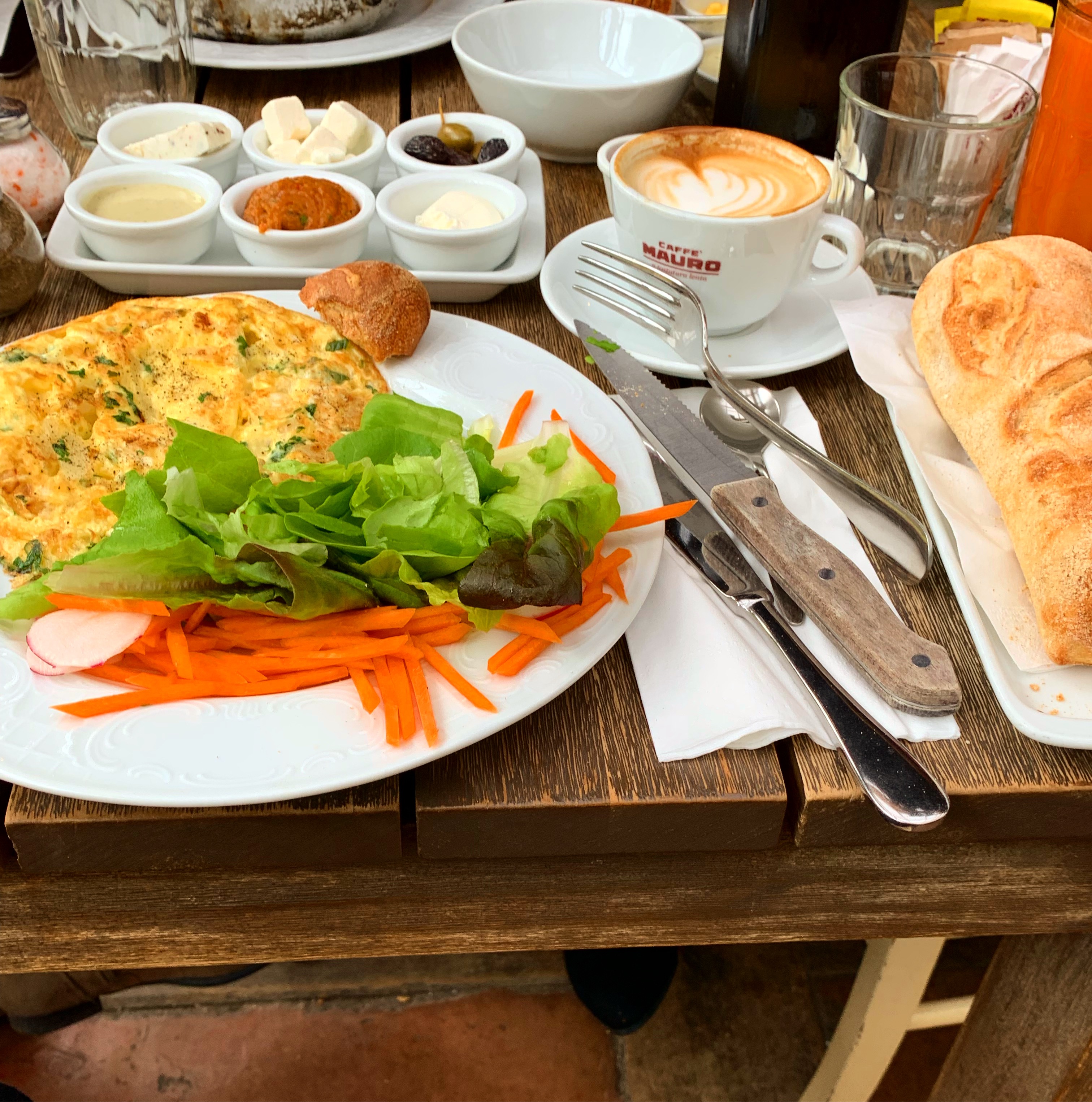
What is StorySelling?
What is StorySelling? https://www.visualstorytell.com/wp-content/uploads/2019/07/Storyselling_Thumb.jpg 366 218 Shlomi Ron Shlomi Ron https://secure.gravatar.com/avatar/995c0cf093380b90c7704fda398c9addf4e5c605afbc92af5c3f01f67d65aa41?s=96&d=mm&r=g
In a syndicated MasterChef episode – the competitive cooking reality TV show – an inquisitive judge asked an antsy contestant:
“So, what have you prepared for us?”
Contestant: “This is a very special dish for me. It’s a dish that I cooked my wife for the last Love Holiday. Since I met my wife, we’ve had lots of financial ups and downs. Many loved ones passed away, we both were unemployed for a while staying at home. We’ve truly gone through a lot.
All of a sudden after the Love Holiday and our wedding, we didn’t have the money to squander on restaurants, so I wanted to cook my wife something special that represents earth, and stability. I wanted to bring out the earthy flavors. And so I cooked her the things she likes; stuffed goose breast, sirloin meat, our native potato, artichoke over chestnut dressing she dies for. I wanted to give her a sense of stability.
It was a very special moment in my life because we were having this special dinner on the roof of my building; a plastic table, a few candles, wine, and this dish. And so it was truly one of the most enjoyable moments in my life.”
After the four judges completed tasting the dish, the moment of truth arrived. Each judge gave the final decision to either pass or fail the contestant:
Judge 1: “People have so many ways to luck out. I think that what you’ve done here is that you brought a moment where you felt you were winning. It was so beautiful how you’ve described how you had that dinner for the Love Holiday. You’ve built a dish around the flavors your wife likes. You lit candles and it was your victory dinner after a very difficult period in your life. I find it charming. I ate your dish and initially I started to analyze it, but then again I was in a completely different place, I was with you. I saw you on that roof savoring your victory moment. And as far as I am concerned your dream starts with us – you pass!”
Judge 2: “This dish put all the things your wife likes, but was less successful in my opinion. I couldn’t see anything from the big moment that you had on that building roof. You’ve done something special with that chestnut dressing and the artichoke. Very tasty as they are nicely connected together. But the best part of your dish was surprisingly the salad. You see, your dish is on the borderline, but I have a feeling that you have a good hand, and so I’d be curious to see what else can you do. Therefore I pass you to the next stage!”
Judge 3: “I find your dish a bit cumbersome. I don’t have the emotional connection that you have to this dish. I experienced only what you served. I am sorry, in my opinion, it’s not good enough for MasterChef. Therefore, from my perspective, you fail.”
Judge 4: “Only judges 1 and 2 have passed you, so that means that if I pass you, you move on to the next stage. Otherwise – you fail. Your story is very beautiful. When I look at your dish there is that pleasant network of textures, but there is also a strong sense of bluntness in this dish. The dressing that you added to support the dish, actually doesn’t support it. Instead, it adds weight to the dish and as such defines it. I have a hard time deciding as this is the last apron we have to give out and it’s a big responsibility…”
Judge 1 interrupts: “Before you give your decision can I give you one more point to think about?”
Judge 4: “Sure!”
Judge 1: “What you have here on this plate, is a flower bouquet, where each flower was selected for the woman he loves. He did something that for him represents breaking a new way in his life.”
Judge 4: “I tell you I feel like “we are breathing” you and decoding the aroma your dish holds. Your dish – despite its weaknesses – has wonderfully communicated the beautiful feeling you had during that memorable evening you shared with your wife. And for that, I pass you!”
 Starting your day with a proper breakfast, ensures the story you star in,
Starting your day with a proper breakfast, ensures the story you star in,
will be a meaningful one.
For more visual storytelling tips, follow us on Instagram
The glaring message from this tale is quite obvious – stories sell!
As the storyline suggests, the dish the contestant prepared was below average at best. Despite this fact, the contestant was able to sell his dish to the judges by elevating its uniqueness using a compelling backstory that changed everything.
But why?
Let’s unpack what’s under the hood of the story the contestant shared.
The story follows the classic three-act-story structure we can classify under Rags to Riches, or at least achieving Mental Riches:
1) Setting: The contestant sets the stage by prefacing that the dish he prepared is very special to him as it represents a loving gesture for his wife.
2) Conflict: He then moves to describe a difficult period of hardships he and his wife experienced.
3) Resolution: He concludes the story by describing a memorable dinner he prepared for his wife that represents a victory moment after that rocky period.
What is StorySelling?
“STORYSELLING is a sales strategy that uses stories instead of product features, testimonials, and stats – to influence a sales event. Its effectiveness is derived from the human propensity to connect better with information that is packaged as stories. These stories show vs. tell your product’s merits, in context. Stories allow your audience to lower their guards down and not process your message as a blatant sales pitch or an ad. Rather, your audience experiences it as a form of entertainment that allows them a non-pressured respite and a reflection of their personal story, as if coming from a close trusted friend.”
Shlomi Ron
CEO, Visual Storytelling Institute
There are a few narrative drivers at play here that helped convince the judges:
Central Idea: The contestant chose to share a story with the judges as a bridge to get them to know his inner world better, and in particular to allow them to experience his dish to the fullest volume it meant to him. The main theme is the power of love to overcome all challenges where a special dish serves as an agent of change.
Emotions: the story is loaded with relatable emotions: from hardship anxiety, sympathy to the contestant’s loving gesture, to awe for his victory moment.
Acuity: the contestant was able to transport the judges to that memorable dinner by describing visual details of the experience (i.e., rooftop, plastic tables, candles, the wine) to help paint a vivid mental picture for the judges.
Empathy: The collective effect of the emotions and the acuity elements, allowed the judges to easily empathize with the contestant’s story. Meaning, parts from their personal stories matched the contestant’s story. As such, the contestant’s story became their story.
From the statements judges shared, you can easily see how judge 1 felt the strongest connection with the contestant’s story. So much that she was transformed from a passive story recipient into an active story maker advocating the story importance to judge 4, who eventually relented and passed the contestant.
Judge 2 had a much milder response to the story, but listening to judge 1’s super supportive verdict, he indirectly acknowledged the contestant’s emotional story by tying it to the possibility the contestant might still have stronger cooking capabilities he would like to see and therefore passed him. This is a classic cross-over effect where a good story can elevate an average product.
Don’t get me wrong, I am not saying you should use stories to sugarcoat average products because at the end they’ll backfire on you and hurt your brand. This contestant may have passed this time but if his next dish is below average then his lower product quality will eventually fail him with judge 3-like terse verdicts.
Instead, consider using great stories to help you sell great product experiences. The more positive experiences you’ll create across your buyer’s journey, starting with your employees, prospects, customers, and advocates – the stronger long-lasting brand impact you’ll have.
And finally, always consider the right context for sharing your story. Not all contexts merit offloading a full story on your audience. My rule of thumb is to evaluate the need for telling a story based on time available, and purpose. There is a difference between a 2-minute chance meeting vs. a 20-minute formal talk. Your story types will also change, and over time, you’ll have a library of stories that will serve you for your various buyer personas, stages in the buyer’s journey and platform cultures.
Need help setting up your StorySelling strategy?
Schedule a FREE appointment so we can capture your business requirements.
- Post Tags:
- StorySelling
- Posted In:
- Story Making
- Story Telling
- Visual Storytelling
Shlomi Ron
Shlomi Ron is the founder and CEO of the Visual Storytelling Institute, a Miami-based think tank with a mission to bring the gospel of visual storytelling from the world of art to more human-centric and purpose-driven marketing. A digital marketing veteran with over 20 years of experience working both on the agency and brand sides for Fortune 100/500 brands such as Nokia, IBM, and American Express. He started VSI to combine his marketing expertise with his passion for visual stories stemming from his interests in classic Italian cinema and managing the estate of video art pioneer, Buky Schwartz. At VSI, he helps brands rise above the communication noise through visual storytelling consulting, training, and thought leadership. Select clients include Estée Lauder, Microsoft, and Cable & Wireless – to name a few. He currently teaches Brand Storytelling at the University of Miami’s Business School. Thought leader and speaker at key marketing conferences. He is also the host of the Visual Storytelling Today podcast, which ranks in the top 10 best business storytelling podcasts on the Web. His book: Total Acuity: Tales with Marketing Morals to Help You Create Richer Visual Brand Stories. Outside work, he is a nascent bread baker, The Moth fan, and longtime fedora wearer likely to jive with his classic Italian cinema interest.
All stories by: Shlomi Ron1 comment
This site uses Akismet to reduce spam. Learn how your comment data is processed.


Leave a Reply